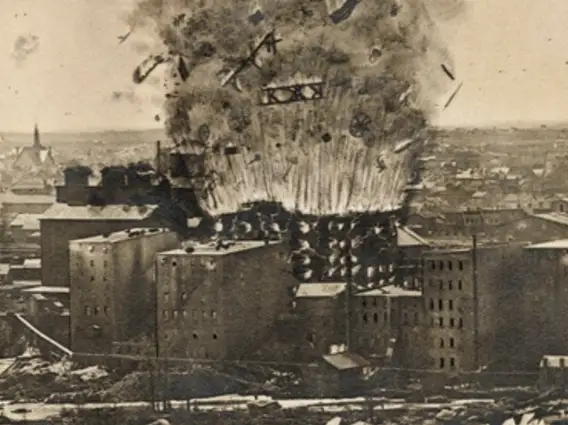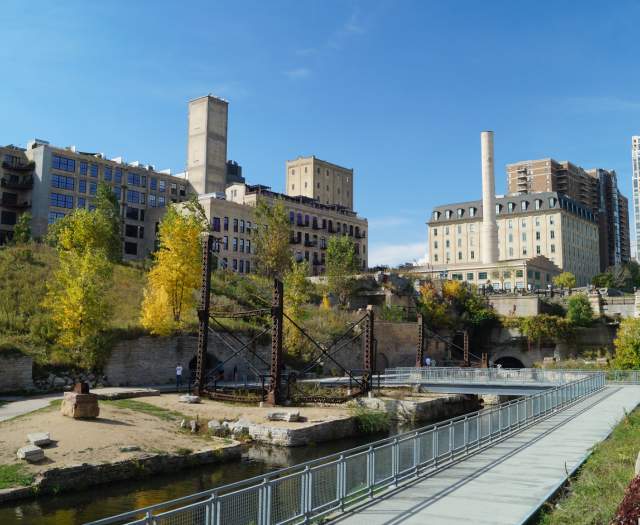At 6:00 PM on Thursday, May 2, 1878, fourteen men began the night shift at the Washburn "A" Mill—an imposing seven-story flouring mill in the heart of downtown Minneapolis—until disaster struck at 7:20 PM. The complex exploded, shaking every corner of the city. The shock was felt as far as St. Paul. The blast leveled the facility, destroyed surrounding buildings, and plunged the city's vital milling district—then the economic engine of Minneapolis—into chaos and uncertainty. Eighteen people were killed in the disaster, including all fourteen men working the night shift. The explosion became a pivotal moment in Minneapolis history, prompting new attention to industrial safety and the hidden dangers of flour dust produced by hard spring wheat—common in the region and known for its especially fine texture, which readily formed highly combustible dust clouds.
Immediately after the blast, dense smoke and flames leapt into the sky. Large chunks of granite fell as far as eight blocks away, and windows shattered for miles in all directions. Fire crews laid a network of hoses, drawing water from every nearby hydrant. The intensity of the heat kept them from approaching the building, hindering their efforts and forcing them to battle the blaze throughout the night. Governor John S. Pillsbury arrived at the scene, having quickly telegraphed St. Paul for additional support from its fire department. The damage stretched from Washington Avenue to the Mississippi River, with six mills destroyed, laying waste to a critical part of the city's industrial core.
The following morning, as heat still emanated from the wreckage, newspaper reports speculated about the cause of the catastrophe. A flouring mill, powered by falling water delivered from a nearby canal and without boilers, shouldn't have exploded—but it did. While the consensus held that the initial blast originated in the Washburn "A" Mill, early theories were speculative, varied, and largely unsubstantiated. Some pointed to gas generators in the facility, suggesting they had ignited in some unknown manner and that flames may have traveled through the mill's flour purifiers. Others speculated that nitroglycerin had somehow been introduced by railroad cars passing near the complex, though no evidence ever supported the claim.
Speculation soon turned to scientific theory, and later scientific fact. An early explanation came from John A. Christian, the "A" Mill's manager, later confirmed by University of Minnesota professors S.F. Peckham and Louis W. Peck. He explained that the explosion was caused by a high concentration of flour dust suspended in the air inside the mill—a poorly understood hazard at the time. When ignited, likely by a spark from an inadequately lubricated pair of millstones, the suspended flour dust combusted with explosive force, ending in disaster. Subsequent controlled experiments confirmed the theory.
On May 3, only a day after the devastation, mill owner Cadwallader Washburn declared his intention to rebuild. The new structure—completed in 1880—abandoned the traditional grindstone method in favor of a cutting-edge roller mill system. Under Austrian engineer William de la Barre's guidance, the facility incorporated revolutionary safety features, including an extensive dust collection system with powerful fans and ductwork to capture airborne flour particles. The redesigned mill also featured enhanced ventilation to prevent the accumulation of combustible dust—a direct response to the tragedy that had unfolded.
Beyond rebuilding, Washburn took steps to support those affected by the disaster. He established a relief fund for victims' families—later revealed to be its largest donor—and arranged continued employment for displaced workers at another facility. The rebuilt mill operated until it produced its final flour in 1965.
 Minnesota Then
Minnesota Then

